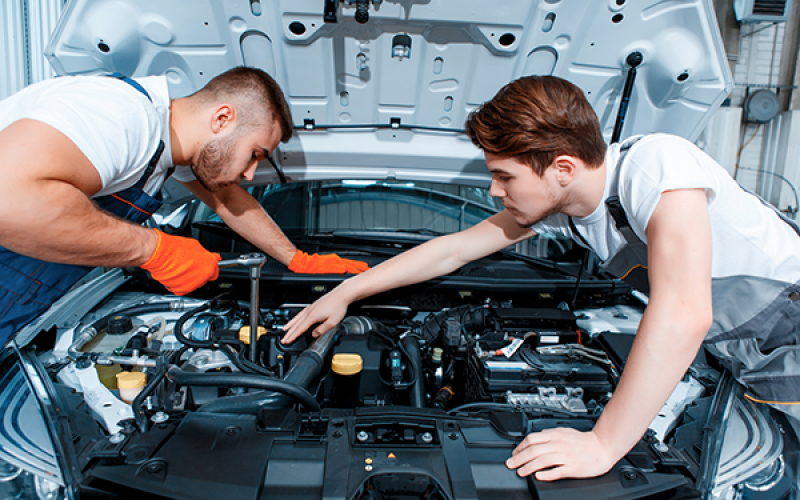All Categories
Featured
Two of the most vital tire services are tire turning and placement. If you're strange with what tire turning and positioning involve, below's an extensive look at why they matter and how they benefit your vehicle.
What Is Tire Rotation? Tire rotation refers to relocating your tires from one placement to an additional to ensure they use uniformly. The reason tire turning is necessary is since not all tires put on the exact same way.
By turning your tires routinely, you can cancel the wear across all 4 tires. This aids them last much longer and enables for more even grip, boosting handling and stability. Most producers recommend revolving your tires every 6,000 to 8,000 miles or as per the automobile's guidebook.
What Is Tire Placement? Tire placement, additionally referred to as wheel alignment, describes the process of readjusting the angles of your cars and truck's wheels to meet the manufacturer's specifications. The goal of placement is to make sure that all four tires are pointing in the appropriate instructions and at the correct angles, which enables for optimum handling, security, and tire life.
There are 3 major alignment angles that are readjusted during an alignment check:

Camber: The tilt of the wheels when watched from the front. If the camber is off, it can lead to unequal tire wear, as the tire will certainly not make complete call with the road surface area. Wheel: The angle of the steering axis when viewed from the side. Correct wheel placement makes certain that your vehicle is secure when driving straight and that your wheel returns to its regular position after a turn. Toe: The angle at which the tires direct internal or outward when seen from above. Wrong toe placement can trigger the tires to drag, causing irregular wear and lowered fuel efficiency. Misalignment can take place over time as a result of typical driving or from hitting challenges like visuals or holes. If your positioning is off, it is necessary to get it inspected and remedied to avoid problems down the roadway.
Why Tire Rotation and Placement Matter. Increased Tire Life:. Normal tire turning makes sure even tire wear, helping you get the most mileage out of your tires. Irregular wear can trigger you to change tires prematurely, which can be costly. When your tires wear equally, they last much longer, conserving you money in the long-term.
Improved Car Handling:. Proper positioning keeps your automobile driving straight and steady, specifically at higher speeds. Imbalance can trigger your auto to draw away, making it more difficult to steer. By maintaining your tires straightened, you ensure your lorry deals with more smoothly and predictably.
Boosted Safety And Security:. Tires that are not turned or lined up appropriately can put on erratically, influencing just how well your automobile quits and corners. Misaligned tires or tires with irregular wear patterns may cause minimized grip, specifically in wet or icy conditions, leading to a greater danger of mishaps.
Better Fuel Effectiveness:. Tires that are misaligned can produce rolling resistance, indicating your engine needs to function harder to relocate the cars and truck. This boosts fuel consumption and reduces your auto's fuel efficiency. Proper tire alignment minimizes rolling resistance, which can enhance gas mileage.
Indications Your Tires Need Rotation or Placement. While it's necessary to remain on top of regular tire rotations and alignments, there are a couple of indications that may suggest your tires require attention:
Unequal Wear: If you observe that tire is a lot more worn than the others, it's likely time for a rotation. Steering Pull: If your cars and truck pulls away or really feels off-center, maybe an indicator of imbalance. Vibrations: If you really feel resonances in the steering wheel or the vehicle, it might be due to a positioning problem. Noisy Tires: Screeching or loud tires might indicate inappropriate rotation or misalignment. If you see any of these indicators, it is very important to obtain your tires checked by a professional.
Just How Frequently Should You Rotate and Align Your Tires? Tire rotation must normally be done every 6,000 to 8,000 miles, though this can differ based upon your driving conditions and the sort of vehicle you drive. It's also an excellent concept to have your tires turned whenever you obtain an oil modification.
For alignment, you need to have your tires straightened every 1-2 years, or much more frequently if you see any kind of problems with taking care of or uneven tire wear. If you hit a large pothole or aesthetic, it's important to obtain a positioning inspect as soon as possible.
Verdict: Regular Upkeep for Optimal Performance. Tire rotation and alignment are 2 straightforward however critical solutions that keep your cars and truck running smoothly, efficiently, and safely. By turning your tires regularly and maintaining your wheels correctly aligned, you can extend the life of your tires, boost handling, and delight in far better gas performance. Do not wait for your tires to show indications of wear-- timetable regular maintenance to keep your cars and truck in top shape. Normal tire care is a financial investment that repays over time, keeping you and your passengers safe on the roadway.
Latest Posts
Coleus Care Tips
Wheel Alignment and Balancing Now! at MO
Discover Affordable Style at Bare Bones Furniture in Glens Falls
